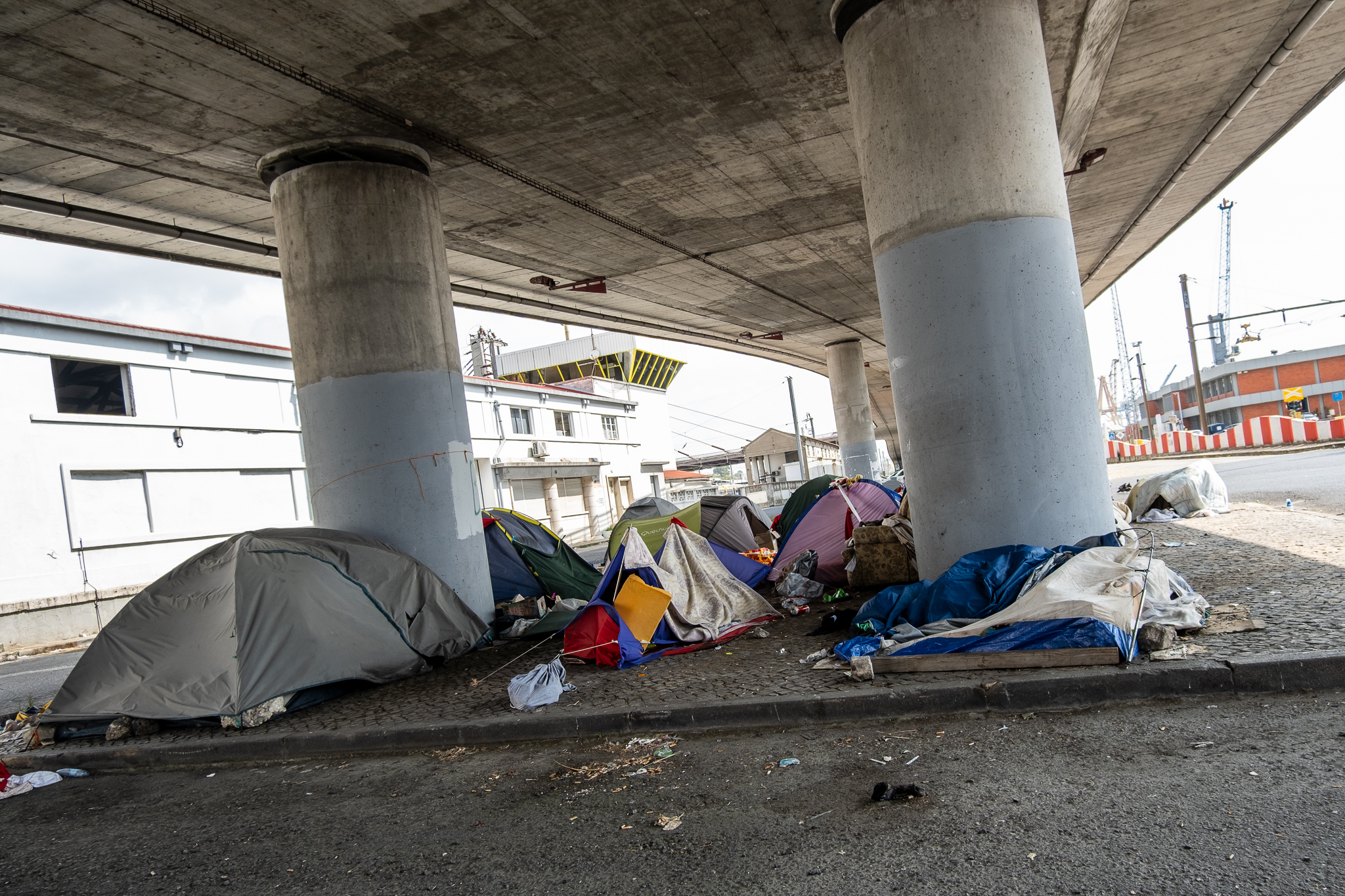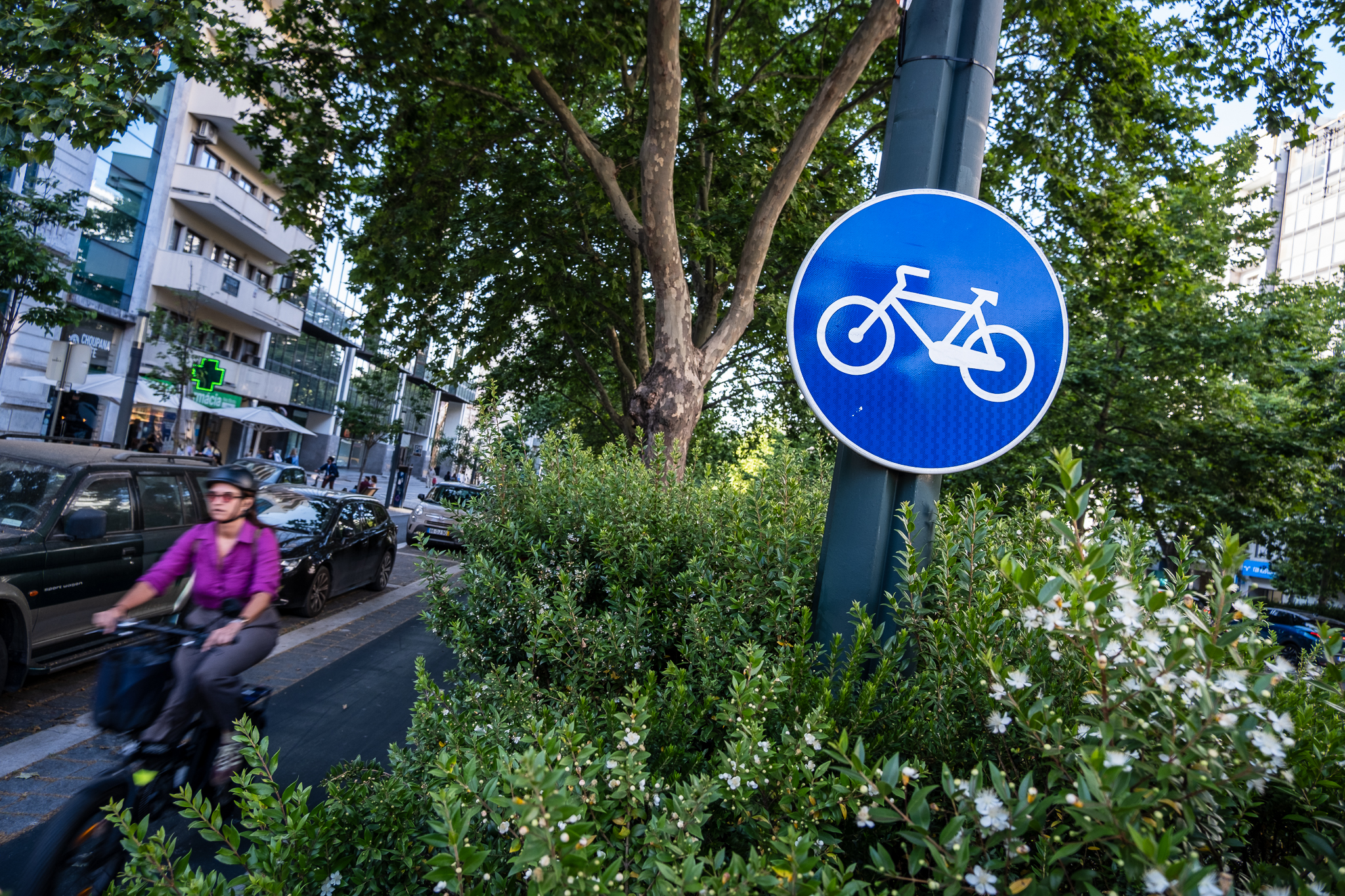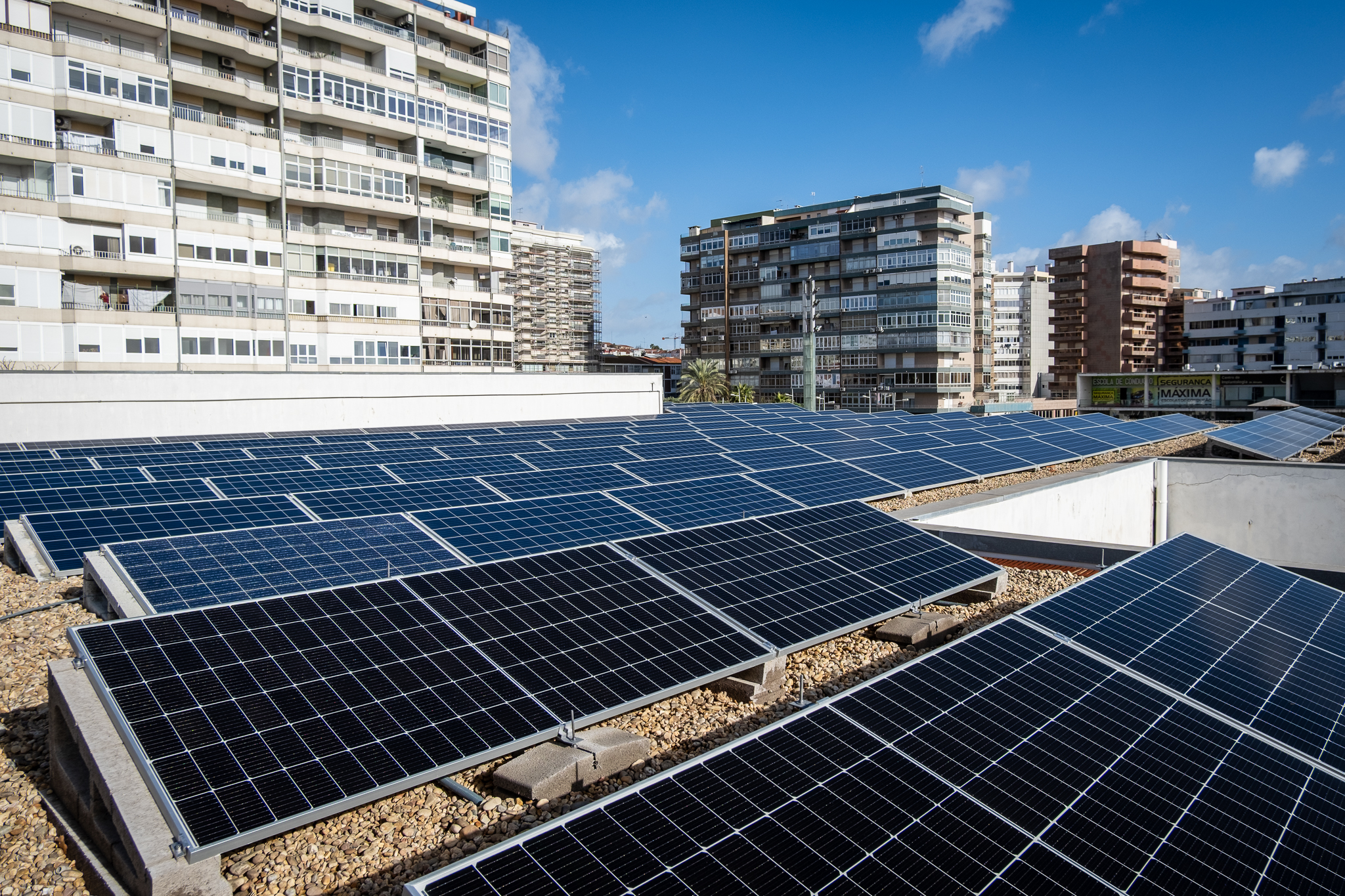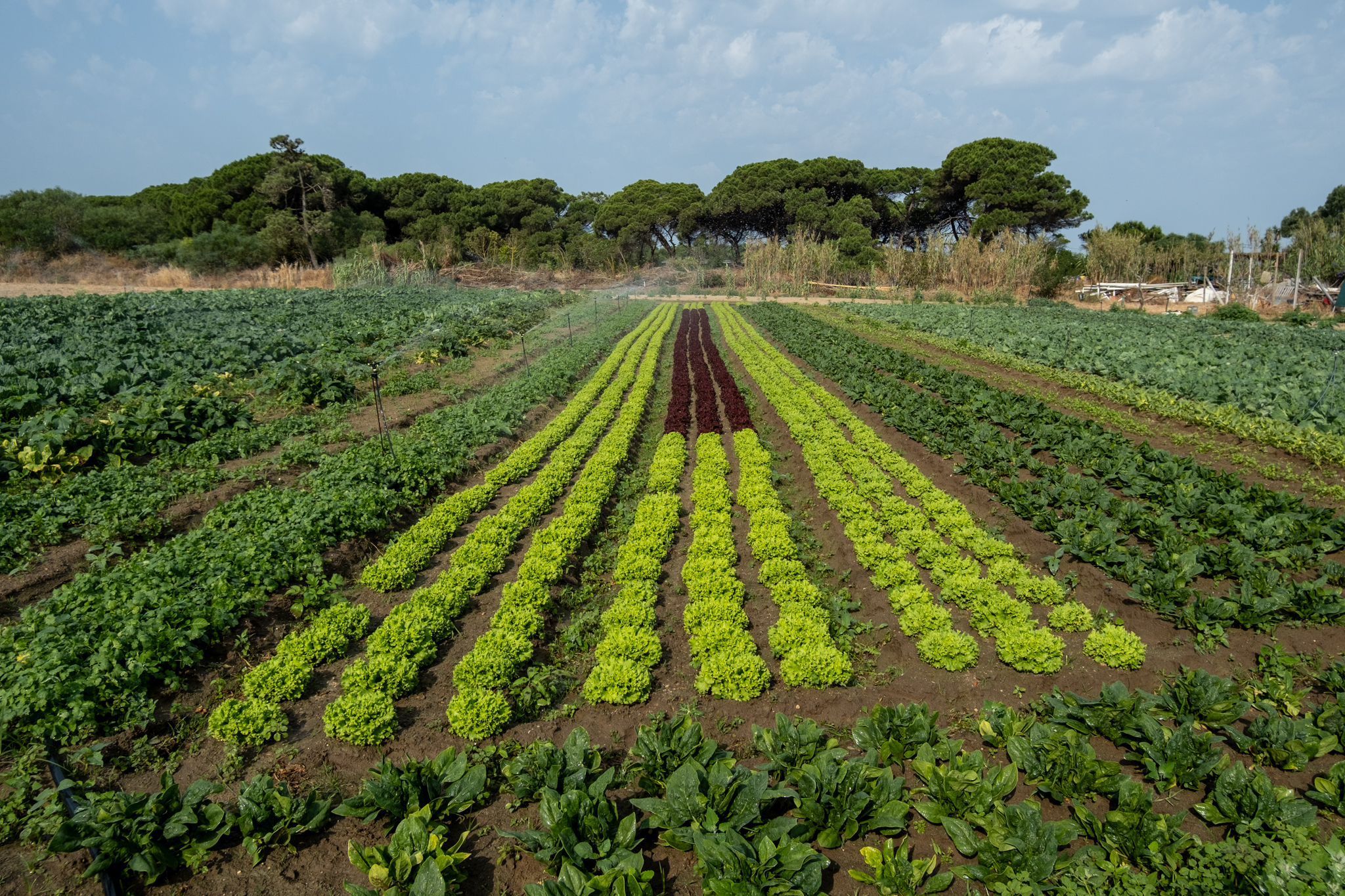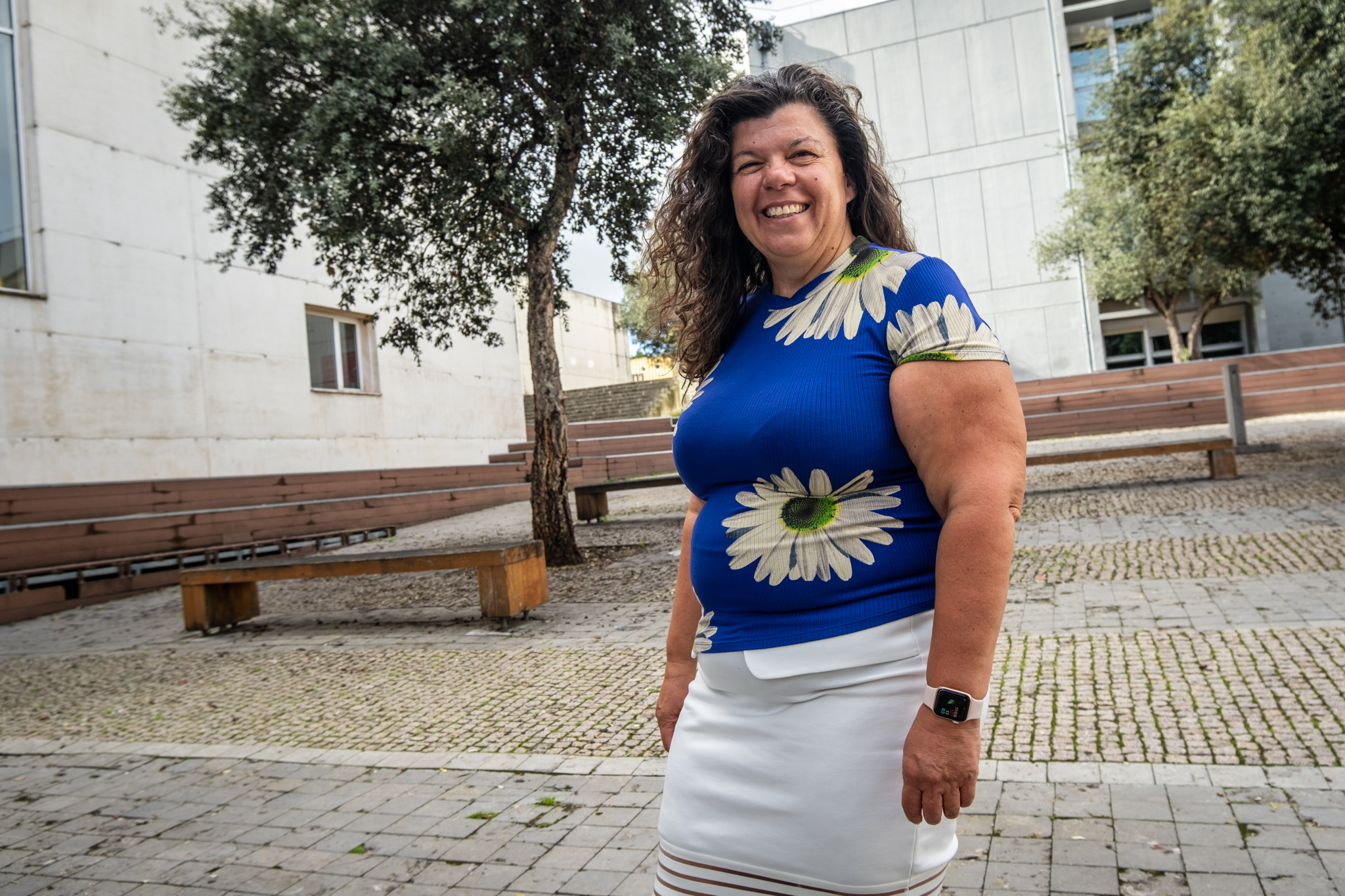The controversy erupted this week around the stage-altar and World Youth Day, which will be held in Lisbon in early August, welcoming at least one million people, has taken on a new media dimension. In this article, we try to explain and clarify the issue.

In early August, we met with SRUthe Lisbon municipal works company, responsible for transforming and preparing the land at the Beirolas landfill, at the mouth of the Trancão river with the Tagus, for the World Youth Day. In a small room, we were presented in detail the event, the planned agenda and the different locations, we see the design of the future, controversial altar-palace and better understand the challenges behind the preparation of the ground. At the time, one year before the event, the public information about this mega catholic event was still scarce.
Days before the meeting with SRU, we published an article with a possible state of play about what was being prepared next to the Tagusby analyzing the Urbanization Plan for Expo'98 and the documentation on the Urban Rehabilitation Area Tejo-Trancão. We realized that there were and there are big plans for the area where the World Youth Day (WYD) will take place - an area with many urban deficiencies - with the event accelerating some of those transformations.

This past week, a new controversy sparked in the public sphere around the costs of the event, in particular the altar-palque that will be set up in the WYD venue (a topic that we will address later), led to more details about the event and the future of the Tagus-Trancão area becoming public knowledge, as well as to a greater curiosity of the population more inattentive to the topic. In this context, the Lisbon City Hall held a press conference on Wednesday, where the Vice-President, FIlipe Anacoreta Correia, clarified some details.
What has been done and what is being done?
The World Youth Day is a meeting between young pilgrims from various parts of the world and Pope Francis. It is held at triennially in a different city, having Lisbon was chosen for the 2022 edition, that, due to the pandemic, has been postponed until this year 2023 (Portugal had submitted an application in 2017).
WYD in Lisbon will take place from August 1 to 6 in various locations around the Portuguese capital, including Terreiro do Paço, Alameda, Parque Eduardo VII, and Parque da Bela Vista. The event will also have one of its moments in the Maritime Park of Algés, in Oeiras. However, it will be in a giant area at the mouth of the Trancão with the Tagus that the Day will have its most media event: here, Pope Francis will give a mass for the thousands of Catholics who decide to participate in the meeting. This moment will take place at the closing of WYD, on August 6, which is a Sunday.

It is precisely for the Tagus-Trancão area that the largest investments are planned. By 2022, the SRU has started a land modelling project for the so-called Beirolas landfill. Basically, the terrain was given the desired shape, drawing a small uniform hill that will have an altar-palque at the top and, around it, the thousands of participants. This work was awarded, by limited tender, to the company Oliveiras, S.A.1.6 million in studies, project preparation and supervision, tasks given to other entities through direct adjustments and previous consultations. All together, the construction work began in March 2022.
The challenge of preparing a land where there is a landfill for a big event is not a small one. During the last few months, several machines have been recovering that entire area - which since Expo'98 has never been used for the city - for the World Youth Day, with the the perspective of creating, after the event, an intermunicipal Urban Park of the Tagus-Trancão, uniting the municipalities of Lisbon and Loures. The contract involved decontamination work on the land, as well as loading and stabilization tests to ensure, for example, that the altar-palque would not overload the underground landfill. The infrastructure of the land was also done, with the installation of water supply, sanitation and electricity - at a total additional cost of 3.3 million euros, according to the local authority.

The controversial altar-palace
At the highest part of the site, the altar-palace will be placed, allowing the Pope to have a good view the entire site, which will extend over 62 hectares, 38 of which are in the municipality of Lisbon. In the meeting we had with the SRU last August, it was explained to us that this stage was designed internally by architects from the municipal company, in collaboration with the Vatican, which praised the chosen solution. The altar-palque we saw designed was the same or similar to the one that has now been made public, although, at the time, the SRU did not let us have the design because it was still being fine-tuned with the Catholic Church. The altar-palque met the concerns and requirements of the organizers of the event: to have capacity for two thousand people, including bishops and other members of the Church, a choir, an orchestra, and, of course, the Pope. This altar - which is actually close to a building - would also have to keep the Pope in the shade, have two elevators and ramps for full accessibility, and a private area under the stage with a chapel where the Pope can retire and pray.

The altar-palque will be created specifically for World Youth Day and a large part of it will be dismantled soon afterwards. The structure will cost 4.24 million eurosand its construction was awarded directly to the company Mota Engil. The high cost of the altar sparked a polemic this past week, with Lisbon City Hall first justifying the investment with the return that the whole Journey will bring to the city. But the contestation will have pressured the President of the Republic and, finally Church and the capital city municipality to revise the project to lower the cost.



At this week's press conference, Filipe Anacoreta Correia explained that, although the contracting of Mota Engil was made by direct adjustment, the local government was "beyond what the law requires" at "process that went on for weeks". In practice, SRU - which is the municipal company responsible for all the construction work - did a kind of informal prior consultationhaving consulted seven companies, "four construction companies and three event companies", which presented bids between 4.4 and 8.4 million euros. According to Anacoreta Correia, of the seven companies, the four entities with the best proposals were selected in a subsequent consultation. "These consultations mean that questions are raised and competitors signal some concerns. So there is a process of talks and discussion."he explained. Another round followed, "more discussion, more talks"and SRU got the two best bids, corresponding to "largest national construction companies in terms of size", which "they made an effort to follow the best price all the way through". “The company that was selected was the one that in all phases of the procedure presented the best proposal"explained the Vice President. "All this process is documented and will go to the Court of Auditors."


"There was a listening process that was extended in time"he summarized. "I prefer public tenders, also as a citizen, and I understand the doubts and fears about the processes. But we have to be aware that this is a one-time thing, that has to be done that day. And the public tender process is often made of impugnations"he explained. In fact, the direct adjustment allows City Halls and other public entities to quickly contract a certain service to a company, allowing them to execute that service right away. Although there is a maximum ceiling of 20 thousand euros of what can be contracted by direct adjustment, there are urgency clauses in the Public Procurement Code that may be alleged in certain situations. Public tender procedures or even prior consultation procedures always take longer, involve different stages, and the different bidders may raise objections that delay the whole contracting process. Now, with an event taking place in August, it is necessary to guarantee that everything is ready in time. And, according to Anacoreta Correia, the municipality will "finish everything we need for this event in one calendar earlier than would otherwise be necessary".
It is because of the urgency to finish all the necessary infrastructure for the World Youth Day that, according to the newspaper ECO, nine out of ten contracts related to the Pope's meeting in Lisbon are being made by direct adjustment or consultation with a restricted lot of supplierswith one event already costing taxpayers more than 80 million.


If Filipe Anacoreta Correia has no doubts that the "merit" of Lisbon being chosen to host WYD belongs to the previous executive, it did not stop, in the public town hall meeting that also took place this weekon the same day as the press conference, pointing the finger at his predecessors. “When we applied for this event, we had to be aware of what it required. When we chose the Beirolas Landfill to be the center of a meeting that brings together a million and a half people, we had to be aware of all the requirements, for example, at the level of the foundations of the structures that we were going to put there, like an altar".he said, rejecting, however, to get into political guerrillas on this issue. "Let us not seek to create or gain stage over an event that is for the good of the city, that has been widely desired and worked for, and let us seek to found and deepen those consensuses." At another point, Anacoreta Correia said "this application was announced to the world in 2019. And 2019 has passed, 2020 has passed, 2021 has passed without this City Council or City Assembly ever being called to any commitment about this process.". Already in July, the Councilwoman for Public Works, Filipa Roseta, had said that when the executive took office there was little or nothing of WYD prepared.
Still on public contracting, the vice-president of the municipality believes that a company could have been formed separately from the Chamber and the Government to speed up the contracting processes, as has been done in the past. "If you think about Parque Expo or Euro 2004, a public limited company was created to develop the big investments. And it did this to provide greater agility".he pointed out in the public town hall meeting. "[This issue] was one of the concerns we showed the government: the fact that we're talking about an important volume of investments and we have the context that we have, which is the municipal one."

Returning to the altar-palace. According to the revealed plan, of the structure that would be built However, only a part would remain, which would be integrated in the future Urban Park: the foundations of the altar-palace, the private area and the roof. The intermediate structure with the ramps and stairs would be dismantled. Initially, the idea was also to remove the roof and leave only the chapel with a small belvedere on top, as the SRU explained to us last August; therefore, only those parts would be made of concrete. The municipal company clarified to us this week that the changes were introduced by the Vatican and the organization. Anacoreta Correia detailed in the press conference that the idea of the chapel "was abandoned", which would have saved between 100 and 300 thousand euros in the total cost now known for the altar-palace. With an eventual revision of the project, it is unpredictable if more parts of the stage will be kept for the future, trying to justify a higher cost.
The Future Urban Park
From the altar-palque, the Pope will be able to see the venue, and people will be able to see the Pope and all the action, with the help of screens that will be scattered at different points. The size of the event calls for a lot of temporary infrastructure, such as two field hospitals, 700 bathrooms, and a pedestrian bridge between Lisbon and Loures, the SRU told us. EMEL is building a cyclopedestrian bridge, made of woodwhich will remain for the city allowing, for the first time, a safe crossing of the Trancão river at that point (the cost has risen from around 3 million to 4.2 million euros, according to the local authority).
On the Loures side, is under construction cyclopedestrian path on footbridges that will allow you to walk or cycle along the Tagus River to Vila Franca de Xira (about 7 million euros). And Infraestruturas de Portugal (IP) is, on the occasion of the WYD invest in Sacavém Railway StationThis is an interface that is expected to be important in the future of metropolitan mobility (about 540,000 euros).




Lisboa Para Pessoas visited the area of the mouth of the Trancão River with the Tagus this week and verified significant advances in these workswhich should be nearing completion in March/April. We saw the bridge with the foundations and pillars already in place, missing the deck. We spotted the wooden walkways across the river. And we saw the Sacavém station receiving several improvements, especially a decent parking area. We also saw the Jornada site almost ready, where the rainfed meadow was sown, which, in a first phase, will take over that space, according to the seasons of the year - green and wet in the rainy season, dry and yellow in the summer period.


O Tejo-Trancão Urban Park, a intermunicipal park between Lisbon and Louresis scheduled for 2024 - At least on the SRU's side, which has included in its Plan of Activities and Budget for 2023 the realization of this investment already next year. The desire to move forward with this Urban Park had been expressed by the company at the aforementioned meeting. The SRU has enjoy the infrastructure created for the event, such as the sanitation and electricity networks, as well as the paths that are being designed on the ground thinking about the pilgrims' mobility, in the conception of this Urban Park. On the Loures side, there is also already a manifestation of will of moving forward with its part of this green equipment, connecting it to the urban areas of Sacavém and Bobadela (from where the containers have already left) and boiling all that riverside area, which has been away from the population.
The design of this Tagus-Trancão Urban Park, which on the Lisbon side results from the extension of the Tagus Park, which has never been concluded since Expo'98, will depend on what is intended to be done with that extensive area in the future. For example, the more or less afforestation of the space - which for now will feature a dry meadow - will depend on decisions to reserve that 38-hectare area for other large events, such as music festivals, as has been discussed in the last few days. Filipe Anacoreta Correia, in the already mentioned press conference, confirmed that Lisbon City Hall has already received "manifestation of interest from event promoters, who have become aware of this infrastructure" that is being set up at the Tagus-Trancão. "Lisbon is very much in demand for cultural and musical events and we are aware that this area could also be in demand in that scope," he added, referring that "that is the City Hall's perspective".who thought "in an investment that could stay in the city".
Anacoreta Correia said, therefore, that the space where WYD will take place "will become immediately available to the population" but that the future Urban Park will still have to "be defined in time"This is to be done by evaluating the demonstrations of interest that have already arisen.

The lack of information
If at the end of July 2022, when we published an article about World Youth DayWe had difficulty in finding information on the subject, and in the following months this information remained scarce. In fact, it was only after the polemic surrounding the altar-palque was launched that its design was released to the media and on a mini-site set up in the meantime by the Lisbon City Hall.
Despite the magnitude of the event and the large sums involved - in July, there was talk of 35 million on the municipal sidewho hired a medium and long-term loan of 15.3 million to finance these investments - the municipality led by Carlos Moedas failed to communicate to the media and also to the population the details and benefits of hosting WYD, making transparency and scrutiny difficult. The subject has been generating a lot of confusion over time - as we already reported in July - in relation to investment values and the responsibilities shared between all parties involved (the Lisbon and Loures City Halls, on one hand; the Local Organizing Committee (COL), created by the Lisbon Patriarchate, on the other; and also the Government, through a working group coordinated by the former Lisbon Green Structure Councilman, José Sá Fernandes).

Between early 2022 and this year, At least three times a political committee that included, among other personalities, the Mayors of Lisbon and Loures and the President of the Republic, went to the Tagus-Trancão site for a visit to the works. On the Lisbon City Hall side, the media was not invited on any of those occasions, and only photographs of the visits were made public - in some of them, one could see at a glance, the plans of the works in progress. A press conference on the WYD was held only this week, after the outbreak of the controversy, clarifying the journalists about the ongoing works and offering them a visit to the construction sites.
In this meeting with the media, the Vice President of the municipality, Filipe Anacoreta Correia, responsible for the WYD, clarified that of the 21.5 million euros that the municipality is investing in the Tagus-Trancão area, 19 million will be left for the future: this includes the Urban Park, the cyclopedestrian bridge, and all the other urban arrangements. "It's a win-win for the city"he said, thanking the SRU for having managed to "doing this work in an extraordinary time"and highlighting EMEL's role in the bridge (which initially was to be an investment for 2021, in the scope of the European Green Capital 2020 label).
It is estimated that Lisbon may have an economic return of between 200 and 300 million Euros, with at least one million people coming and staying for more than one week (There is talk that it may be a million and a half - WYD has paid registration, but it is a free event that anyone can join without registration, but without a guarantee of a place in the venue, so it is difficult to estimate how many pilgrim participants there may be).
The question that several people have asked is whether the state, local and national, should invest so much in an event that belongs to the Catholic Church.
Join the discussion at the Lisboa Para Pessoas Community on Discord.


